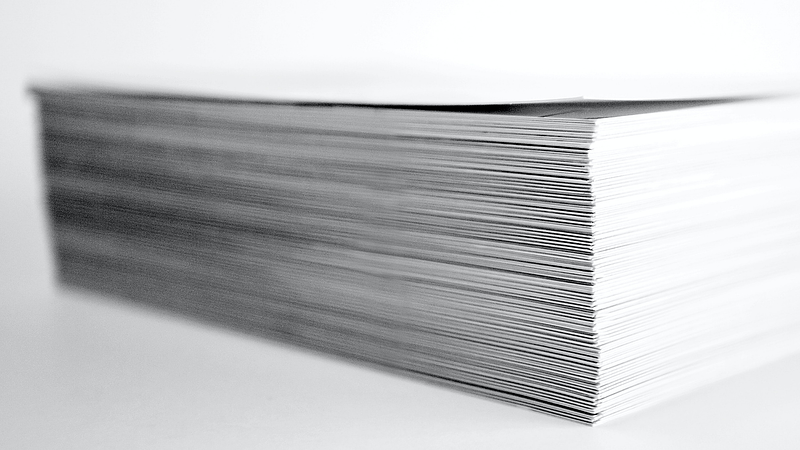Have you ever wondered why a standard sheet of paper is 8.5" x 11"? Those numbers may look like they were chosen at random, but actually, there's a good reason for these precise measurements. The two-sheet mold for papermaking was invented by the Dutch in the mid-1600s. The average maximum reach of a workman's arms was 44″, and the paper molds were 17" deep. Therefore, 44" x 17" sheets were produced, which were then divided into eight pieces at…you guessed it…8.5" x 11".
American legal paper was standardized to 8.5” x 14” during the Great Depression. Herbert Hoover didn’t want to put traditional paper-makers out of business during a time of such economic hardship, so the traditional 8.5” width remained in place, even though paper was more commonly being made by machine. The additional length for legal documents also makes perfect sense: it allows room for a signature.

American Paper Standards Vs European
The most common paper dimensions used in the United States are letter and legal, although there are others. European standard paper sizes range from A0-A10, with A4 being the most commonly used, measuring roughly 8.3" x 11.7". Since European countries have adopted the metric system, sizes are measured in millimeters.
The American National Standards Institute (ANSI) regulates American paper sizes, whereas outside the U.S., paper sizes fall under the International Organization for Standardization (ISO). However, outside of the U.S. and Europe, paper is not standardized across the globe. For example, Japan has its own paper standards, which fall under the jurisdiction of the Japanese Industrial Standards Committee (JISC).
How To Choose The Right Copier/Printer Based On Paper Use
Most modern printers and copiers will have the ability to enlarge or reduce a document to print it on a different paper size. However, if your organization frequently prints out documents generated outside of the U.S., you may want to keep both ISO and ANSI paper available and look for printing devices that can accommodate a wider variety of paper sizes.
If your business will be generating documents and materials that fall outside of typical business use, regardless of where that business is located, you may be in the market for a wide format printer, which can produce large graphs, architectural plans, posters and more.
Marco Can Help
Printers and copiers are difficult to research, and depending on your needs, they can be a significant financial investment. If you're struggling to identify the right printing device for your organization, Marco has created a two-minute quiz to save you quite a bit of time. You're also welcome to ask one of our experts to point you in the right direction.
You might be pleasantly surprised by what you find. Today's printing devices have cybersecurity and cost-saving features that simply weren't available years ago. A new printer could reduce your risk of being hacked, produce less waste, lower your electric bill, and address common workplace privacy concerns.
